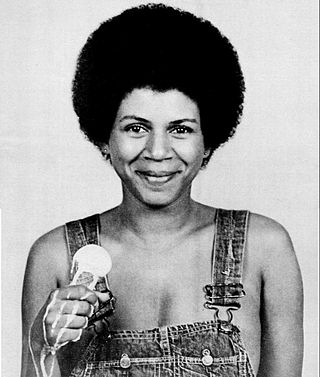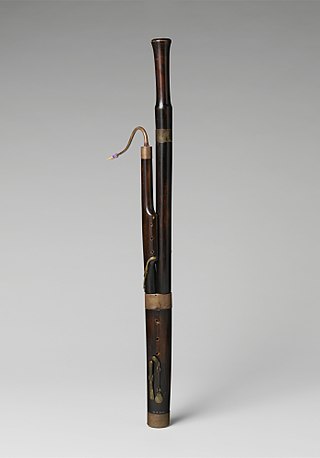
A musical keyboard is the set of adjacent depressible levers or keys on a musical instrument. Keyboards typically contain keys for playing the twelve notes of the Western musical scale, with a combination of larger, longer keys and smaller, shorter keys that repeats at the interval of an octave. Pressing a key on the keyboard makes the instrument produce sounds—either by mechanically striking a string or tine, plucking a string (harpsichord), causing air to flow through a pipe organ, striking a bell (carillon), or activating an electronic circuit. Since the most commonly encountered keyboard instrument is the piano, the keyboard layout is often referred to as the piano keyboard or simply piano keys.
In music, notes are distinct and isolatable sounds that act as the most basic building blocks for nearly all of music. This discretization facilitates performance, comprehension, and analysis. Notes may be visually communicated by writing them in musical notation.

The tin whistle, also called the penny whistle, is a simple six-holed woodwind instrument. It is a type of fipple flute, putting it in the same class as the recorder, Native American flute, and other woodwind instruments that meet such criteria. A tin whistle player is called a whistler. The tin whistle is closely associated with Irish traditional music and Celtic music. Other names for the instrument are the flageolet, English flageolet, Scottish penny whistle, tin flageolet, or Irish whistle.

A clef is a musical symbol used to indicate which notes are represented by the lines and spaces on a musical staff. Placing a clef on a staff assigns a particular pitch to one of the five lines or four spaces, which defines the pitches on the remaining lines and spaces.
C or Do is the first note of the C major scale, the third note of the A minor scale, and the fourth note of the Guidonian hand, commonly pitched around 261.63 Hz. The actual frequency has depended on historical pitch standards, and for transposing instruments a distinction is made between written and sounding or concert pitch. It has enharmonic equivalents of B♯ and D.

A transposing instrument is a musical instrument for which music notation is not written at concert pitch. For example, playing a written middle C on a transposing instrument produces a pitch other than middle C; that sounding pitch identifies the interval of transposition when describing the instrument. Playing a written C on clarinet or soprano saxophone produces a concert B♭, so these are referred to as B♭ instruments. Providing transposed music for these instruments is a convention of musical notation. The instruments do not transpose the music; rather, their music is written at a transposed pitch. Where chords are indicated for improvisation they are also written in the appropriate transposed form.
A soprano is a type of classical female singing voice and has the highest vocal range of all voice types. The soprano's vocal range (using scientific pitch notation) is from approximately middle C (C4) = 261 Hz to "high A" (A5) = 880 Hz in choral music, or to "soprano C" (C6, two octaves above middle C) = 1046 Hz or higher in operatic music. In four-part chorale style harmony, the soprano takes the highest part, which often encompasses the melody. The soprano voice type is generally divided into the coloratura, soubrette, lyric, spinto, and dramatic soprano.

The sheng is a Chinese mouth-blown polyphonic free reed instrument consisting of vertical pipes.

The whistle register is the highest register of the human voice, lying above the modal register and falsetto register. This register has a specific physiological production that is different from the other registers and is so called because the timbre of the notes that are produced from this register is similar to that of a whistle.
The soprano saxophone is a higher-register variety of the saxophone, a woodwind instrument invented in the 1840s. The soprano is the third-smallest member of the saxophone family, which consists of the sopranissimo, sopranino, soprano, alto, tenor, baritone, bass, contrabass saxophone. Soprano saxophones are the smallest and thus highest-pitched saxophone in common use.

Piano tuning is the act of adjusting the tension of the strings of an acoustic piano so that the musical intervals between strings are in tune. The meaning of the term 'in tune', in the context of piano tuning, is not simply a particular fixed set of pitches. Fine piano tuning requires an assessment of the vibration interaction among notes, which is different for every piano, thus in practice requiring slightly different pitches from any theoretical standard. Pianos are usually tuned to a modified version of the system called equal temperament.

Scientific pitch notation (SPN), also known as American standard pitch notation (ASPN) and international pitch notation (IPN), is a method of specifying musical pitch by combining a musical note name and a number identifying the pitch's octave.

In music, a guitar chord is a set of notes played on a guitar. A chord's notes are often played simultaneously, but they can be played sequentially in an arpeggio. The implementation of guitar chords depends on the guitar tuning. Most guitars used in popular music have six strings with the "standard" tuning of the Spanish classical guitar, namely E–A–D–G–B–E' ; in standard tuning, the intervals present among adjacent strings are perfect fourths except for the major third (G,B). Standard tuning requires four chord-shapes for the major triads.
Jazz chords are chords, chord voicings and chord symbols that jazz musicians commonly use in composition, improvisation, and harmony. In jazz chords and theory, most triads that appear in lead sheets or fake books can have sevenths added to them, using the performer's discretion and ear. For example, if a tune is in the key of C, if there is a G chord, the chord-playing performer usually voices this chord as G7. While the notes of a G7 chord are G–B–D–F, jazz often omits the fifth of the chord—and even the root if playing in a group. However, not all jazz pianists leave out the root when they play voicings: Bud Powell, one of the best-known of the bebop pianists, and Horace Silver, whose quintet included many of jazz's biggest names from the 1950s to the 1970s, included the root note in their voicings.
A or La is the sixth note and the tenth semitone of the fixed-do solfège.

The tenor bassoon or tenoroon is a member of the bassoon family of double reed woodwind instruments. Similar to the alto bassoon, also called octave bassoon, it is relatively rare.
In music, an extension is a set of musical notes that lie outside the standard range or tessitura.
A voice type is a group of voices with similar vocal ranges, capable of singing in a similar tessitura, and with similar vocal transition points (passaggi). Voice classification is most strongly associated with European classical music, though it, and the terms it utilizes, are used in other styles of music as well.

The Stradella Bass System is a buttonboard layout equipped on the bass side of many accordions, which uses columns of buttons arranged in a circle of fifths; this places the principal major chords of a key in three adjacent columns.
The western concert flute family has a wide range of instruments.










